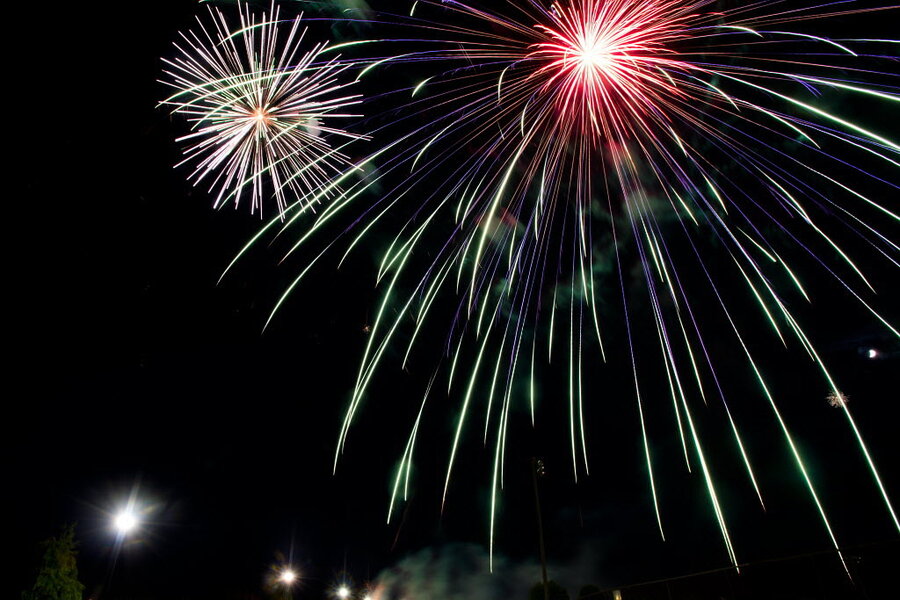Why are Danes celebrating the Fourth of July?
Loading...
Every July 4, American expatriates across Europe gather in military bases and touristy bars to celebrate the red, white, and blue.
But in one locale in Denmark, it’s the Europeans – not the Americans – who are leading the patriotic charge.
Since 1912, thousands of Danes have congregated in a national park to picnic before Old Glory, listen to speeches from American dignitaries, watch fireworks, and sing favorites such as “Home on the Range” and “Stars and Stripes Forever.” It’s called Rebildfesten, and organizers say it’s the largest – and perhaps the only – official celebration of the American holiday by foreigners.
The festival started in 1911, when a group of Danish-Americans – members of the Rebild Society, based in Illinois – purchased a hilly piece of land on the Danish peninsula of Jutland, revered for its beauty since the age of the Visigoths. They then gifted it to King Christian IX, on the condition that it remain natural and available for an annual American independence celebration.
Since the beginning, the festival has also been a homecoming celebration for Danish-Americans, many of whom still make the pilgrimage. A significant majority of the attendees, however, are Danes, which raises the question: Why do so many foreigners spend the day celebrating a US holiday?
“I think Danes to some extent are really like Americans in that a lot of people like a good party,” says Egon Bodtker, president of the Danish American Heritage Society. “It’s really just a nice day out.”
The festivities begin July 2, but the busiest day is July 4. Shortly after midnight, the fireworks begin, says Linda Steffensen, a serial Rebildfesten attendee and the editor of the Danish-American newspaper The Danish Pioneer.
The next day features a 600-person lunch and speeches by Danish and American celebrities and dignitaries. Malena Belafonte, a Danish-American singer, model, and actress, will be speaking this year, and past festivals have featured notables such as President Ronald Reagan and Chief Justice Earl Warren.
Afterward, the festival begins in earnest with Danish and American musicians entertaining picnickers into the evening. Recent years have even included folk and square dancing.
The festival isn’t always without controversy, however. In decades past, politics have interfered with the otherwise celebratory occasion.
“It can be a place where some Danes can register dismay,” says John Mark Nielsen, executive director of the Museum of Danish America in Blair, Neb., and a speaker at Rebildfesten in 2008.
“During the late 1960s and ‘70s and ‘80s, the Danes tended to be left of center, so there were concerns," he added. "There were protests during the cold war, particularly when Salvador Allende was overthrown in Chile, and [Gen. Augusto] Pinochet came to power.”
Still, he says, political matters are rarely at issue now, partially because the Danes admired President Bill Clinton and supported the NATO force in Afghanistan. Nowadays, almost all attendees are happy to simply enjoy the festivities, soak in the scenery, and be merry.
“It’s really quite beautiful from a natural standpoint, with steep, heather-covered hills,” Mr. Nielsen says. “So it’s just a great place for eating and speeches and music and song.”







